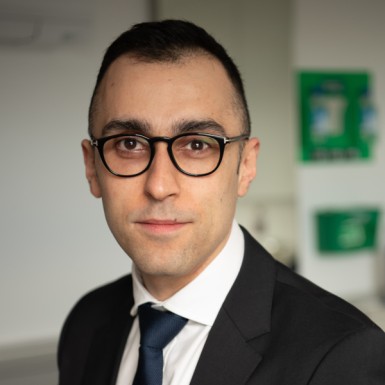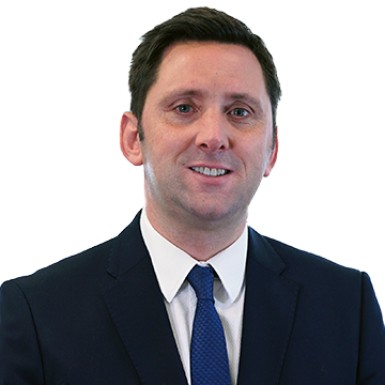Facial fat transfer, also known as fat grafting, is a popular cosmetic surgery procedure designed to restore youthful volume and enhance facial features using your own fat. This minimally invasive procedure involves transferring fat from one part of the body to the face, where it can smooth out fine lines, fill in areas of lost volume, and rejuvenate your overall appearance. Unlike synthetic dermal fillers, facial fat transfer uses your body’s own fat cells, making it a natural and organic option for those seeking subtle, long-lasting results. With minimal downtime and a low risk of allergic reaction, facial fat transfer is an excellent choice for anyone looking to refresh their look without extensive surgery.
Plastic Surgeons have used the fat transfer procedure in cosmetic surgery for decades. In fact many patients who decide to have a facelift incorporate fat transfer to give added volume to the cheek area. Facial ageing is often due to the depletion of bony and fat deposits, which can result in a gaunt and tired face. Fat transfer can restore lost volume and rejuvenate facial contours.
Fat grafting is a surgical procedure that begins with the careful harvesting of fat from areas such as the abdomen, thighs, or flanks—places where fat is often more abundant. This harvested fat is then processed and purified to isolate the healthiest fat cells, ensuring the best possible outcome for your facial fat transfer procedure. Once prepared, the purified fat is meticulously injected into targeted areas of the face, such as the cheeks, lips, or under the eyes, to restore lost volume and enhance your natural facial features. The fat transfer procedure is typically performed under local or general anaesthetic, depending on the amount of fat being transferred and your comfort level. The entire process can take anywhere from 30 minutes to several hours, tailored to your individual needs and the specific areas being treated.
Fat transfer involves two procedures all carried out under local anaesthesia. There may be a little bruising which subsides over a week or so and can be covered with makeup. There is little to no down time, and you can get back to your daily activities quickly. It is a long term solution to volume loss unlike dermal fillers which dissolve within 12-18 months.
The two procedures for Fat transfer involve:
Micro lipo of fat: The surgeon removes a small amount of the patient’s own fat tissue—usually from the stomach, back or thighs—using liposuction or micro lipo through a small micro cannula. This process is known as fat harvesting, and it involves removing excess fat from these areas. The fat is firmer and stronger in these areas. The harvested fat is then centrifuged and the stem cells are separated.
Injection of fat and stem cells: They are then injected in the area that requires volume for a more rejuvenated look. This procedure is also known as a facial fat graft or fat graft. Our Plastic surgeons will then transfer the fat cells to the area where they want more volume through a micro-droplet technique. The droplets are so tiny that they don’t damage surrounding tissue or nerves. The success of grafted fat depends on careful technique. The body's fat cells are used for this process, and slim patients may not have enough fat for optimal results.
Fat transfer surgery is generally safe, but it does carry potential risks, including rare complications such as fat embolism.
Experts - our surgeons have performed hundreds of fat grafting operations
A fat transfer is a cosmetic procedure that removes unwanted fat cells from one area of the body and deposits them into another area of the face. After the extraction process, the surgical team injects the fat cells into areas of the face where more volume is necessary to achieve the right look. This procedure uses the patient's own natural fat to restore facial structure and contours, enhancing features such as the cheeks, temples, and jawline.
Fat transfer or lipofilling is often used to replace dermal fillers and is a more permanent way to add volume and rejuvenate the face. Patients who undergo fat transfer benefit from a more natural and long-lasting result, as facial fat transfer can achieve a more natural look.
The time required for a fat transfer can vary, depending on the number of treated areas. Typically one to two hours performing mico liposuction and injecting the cells into the face.


There is no ideal age. If you are interested in enhancing or creating more volume in specific areas of the face then facial fat grafting or fat injections could be for you. The procedure can treat sunken cheeks, deep-set eyes, nasolabial folds or nose to mouthlines and the chin. We see patients in their 30’s, 40’s, 50s, 60s and 70s.
Candidates should be close to their ideal body weight and have enough fat available for harvesting to ensure the best results. Slim patients may have less fat available, which can affect their suitability for the procedure.
At Kensington Medical we are delighted to offer this advanced service. Fat can also be stored for many more years so that you can use it later on. This means that if in two years for example you would like more volume or a refresh we can arrange for your stored fat to be used by our plastic surgeons.
Fat transfer can complement other treatments. Patients who have surgery, such as a facelift or eyelid lift, often have fat transfer to give more volume to the cheek area.

Facial fat transfer is just one of several cosmetic surgery options available for facial rejuvenation. Other popular procedures include facelifts, eyelid lifts, and the use of dermal fillers. Many patients are drawn to facial fat transfer because it uses their own fat cells, reducing the risk of allergic reactions and providing a more natural, long-lasting result compared to synthetic alternatives. This procedure can also be combined with other cosmetic surgery treatments, such as facelifts or eyelid lifts, to further enhance facial contours and achieve a harmonious, youthful appearance. By choosing facial fat transfer, patients benefit from a procedure that not only restores volume but also improves overall skin quality and facial balance.
For those who may not be suitable candidates for fat transfer or who prefer a non-surgical approach, there are several alternatives available. Dermal fillers, particularly hyaluronic acid fillers, are commonly used to restore lost volume and smooth out fine lines and wrinkles. While effective, these fillers are not as long-lasting as fat transfer and typically require repeat treatments every 6 to 12 months. Other non-invasive options include facial exercises, massage, and advanced skincare treatments, all of which can help to improve skin quality and reduce the appearance of fine lines. While these alternatives can offer improvements, they may not provide the same level of volume enhancement or longevity as a facial fat transfer.
Recovery from facial fat transfer is generally straightforward, with most patients experiencing only mild swelling, bruising, and discomfort for a few days following the procedure. It’s important to avoid strenuous physical activity during the initial healing process to ensure the best possible results. Patients are encouraged to follow a healthy diet and adhere to their plastic surgeon’s aftercare instructions to support optimal healing. While some results are visible immediately, the final outcome of your facial fat transfer will become more apparent over several months as the transferred fat cells establish a new blood supply and settle into place. With proper care, the rejuvenating effects of facial fat transfer can last for many years, providing a refreshed and youthful appearance.
What are the risks associated with fat grafting?
As with any surgical procedure, there are certain risks and complications to consider with fat grafting. Potential risks and complications include infection, bleeding, uneven texture, unsatisfactory results, and in rare cases, fat embolism. Fat transfer is relatively low risk because the surgeon harvests fat cells from the patient’s own body, minimizing the chance of immune rejection. However, if too much fat is transferred into one area, it could look unnatural. Our skilled plastic surgeons have years of experience and know exactly how much fat is necessary to remove in order to achieve the look you want, while minimizing potential risks.
What scarring can you expect from fat grafting?
Fat transfer results in tiny incisions, so the resulting scars will be invisible to the naked eye.
What is recovery from a fat transfer like?
There is minimal downtime following facial fat grafting, and most patients can return to work within a few days. Bruising and swelling are common post-operative effects, but these will subside over the next week to 10 days. Patients should avoid strenuous exercise or heavy lifting for two weeks.
How soon will I see results / are they permanent?
It can take up to two weeks for the swelling, bruising and recovery from surgery to subside. You will see a lifted appearance in the area being treated with added volume. Fat grafting results are typically natural-looking and long-lasting, as a percentage of the transferred fat survives permanently. It may take several months for your body to absorb the transferred fat cells fully. If you maintain a healthy lifestyle, results can last a number of years.
How much does fat grafting or fat transfer cost?
The cost can vary depending on the area and number of areas being treated. Fat grafting or fat transfer prices start from £3,500 to £7,000 for the full face. The best option is to speak to our plastic surgeon who can explain in detail about the treatment and discuss what you want to achieve.
The fat transfer price includes:
Things to consider:
There are instances whereby the patient will require a second treatment. This means that they will have a second micro liposuction treatment on the day of the second fat transfer treatment. The reason this can happen is because an experienced plastic surgeon will not want to overfill the face or under eye area, because this can cause issues. They will therefore be cautious to ensure the patient has the best fat grafting results.
We are seeing people deciding on the fat trasnfer option because it lasts many years and it is not a foreign substance. Unlike dermal filler which last 12-18 months and is not their own fat or stem cells.
How should I prepare for fat grafting?
Our plastic surgeon will give you more specific advice on preparing for this treatment. We advise to stop smoking and avoid blood thinners before your surgery. You'll also need to avoid taking pain medication that contains aspirin or ibuprofen in the weeks leading up to your surgery. You will be given full advise on how best to prepare.

Mr David Gateley

Mr Amir Sadri

Mr Paul Tulley

Mr Naveen Cavale
The Kensington Medical team provides thorough information about fat transfer so that you can makean informed decision. During the consultation with your experienced plastic surgeon you will discuss what you want to achieve, what happens during and after the treatment, the risks and downtime needed. If you have a special event or date in mind, we will work our way back to ensure you are fully recovered and looking your best.
Our goal is to restore your confidence and make you feel refreshed.

Medically reviewed by Mr David Gateley MA, FRCS, FRCS (Plast), GMC number 2939470 on 2 July, 2025.